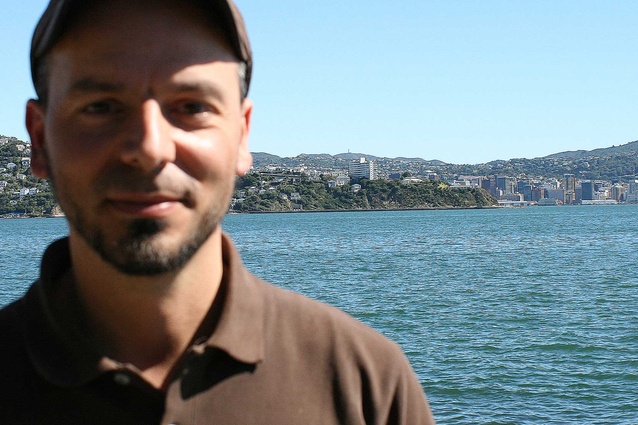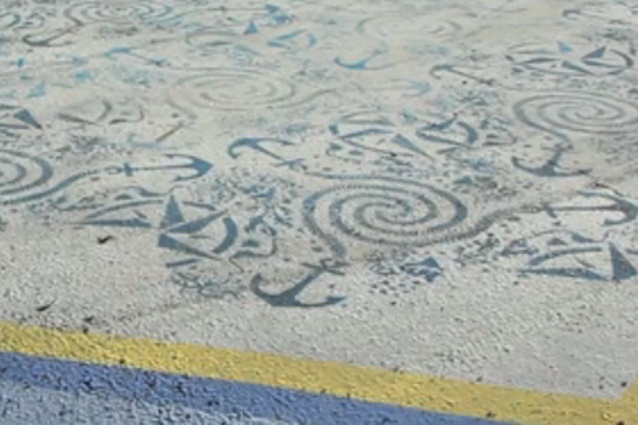Massimo Santanicchia visits New Zealand
Auckland’s Wynyard Quarter has won high praise from Reykjavik-based architect Massimo Santanicchia for the “observable scaffolding” it is providing for an area in transition.
Santannichia knows a thing or two about making waterfront spaces more accessible from sparking a design revival at the harbour’s edge of the world’s northernmost capital last year, within the context of an award-winning programme known as the Meanwhile projects.
Currently in New Zealand accompanying his life partner and democracy activist Hordur Torfason on a speaking tour, Santanicchia has also been drawing audiences to hear his views on the ways in which Iceland’s largest city is embracing a more human scale of urbanism in the wake of the financial crash.
Originally from Perugia, Italy, Santannichia has come to know Reykjavik – population 120,000 – intimately over the last decade.
Essentially an outsider in the tightly knit Icelandic society he has survived the downturn by moving from the firm Arkitektur to a plethora of internationally connected activity – delivering courses at the Iceland Academy of Arts and coordinating projects and workshops with organisations such as the International peace and Cooperation Center and the Architectural Association.
Santinicchia brings a particular focus to the challenges faced by cities smaller than 500,000 citizens (where 52 per cent of the world’s urban population lives) and the neglected spaces that bedevil all cities.
“It’s not enough to have a collection of buildings, or only do things on a big scale. In Reykjavik the infrastructure is also too big for the city, creating barriers. Small, leftover spaces in a city have a different time scale, and bringing them back to life can be very powerful”.
He describes the Iceland Academy of Arts as a Bauhaus-like environment for multi-disciplinary collaboration, and an ideal base for the street research projects and small scale, low budget interventions he has developed a special interest in.
Run by the city, the Meanwhile projects see small grants of up to 5000 Euro (NZ$7,777) converted into creative projects that pop up during the short Icelandic summer, showing how fast the cityscape can be transformed by joyful, visible signs of urban life amongst the built environment.
In 2012 Santanicchia turned from earlier projects with students, to making his own mark on the neglected space adjacent to an old port area and a stalled redevelopment.
Unlike other projects Santinnichia expects his “easy, simple, no disruption project” will stay in place for some while because it is seasonally neutral and because people and merchants in Reykjavik are “asking for more”.
Effectively the whole of the funding he received went into the two sets of simple materials: repurposed road marking paint (white, yellow and blue) for stripes to lead and direct people along a walkway; a staggered array of Italian-inspired flagpole-mounted pennants on a textile design of myriad triangles bursting with colour and intended to mimic torches.
“One way of describing this is to call it the production of space. Flags are something that we’re always connected to. They are not big but they promote and celebrate the existence of a togetherness that’s central to expressing our humanity”.
At one end, these lead to the iconic Harpa concert hall , partially abandoned before its eventual opening in May 2011 as the home for the Iceland Opera and Symphony Orchestra and as the city’s conference centre.
A short film is available to view about the project, initially known as red carpet.
Santanicchia’s visit to New Zealand is supported by the Sustento Institute and his lecture in Christchurch this week is organised by the Christchurch Transitional Architecture Trust with venue support from CPIT. He is also speaking on 27 & 28 March in Dunedin at the Otago Polytechnic School of Arts and University of Otago’s School of Surveying.
Biographical Note: Santanicchia was initially educated in Venice and Stockholm before completing an MA in Housing and Urbanism at the Architectural Association in London. In 2010-11 he completed an MSc in Regional and Urban Planning Studies at the London School of Economics.











